Un saludo a mis amigos de @AmazingDrinks

Deseaba volver por esta comunidad y está vez les traigo una bebida exquisita de una fruta que aunque es muy conocida no siempre la tenemos al alcance. La uva.
Hoy fui de visita al campo y en la casa de mi amiga Magda está la inmensa enredadera en forma de techo con cientos de macetas de uvas.
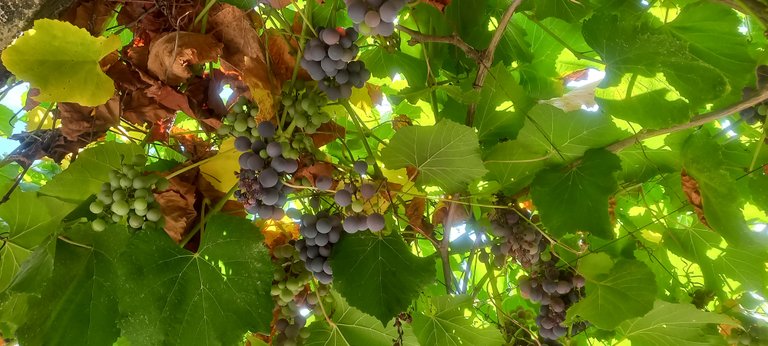
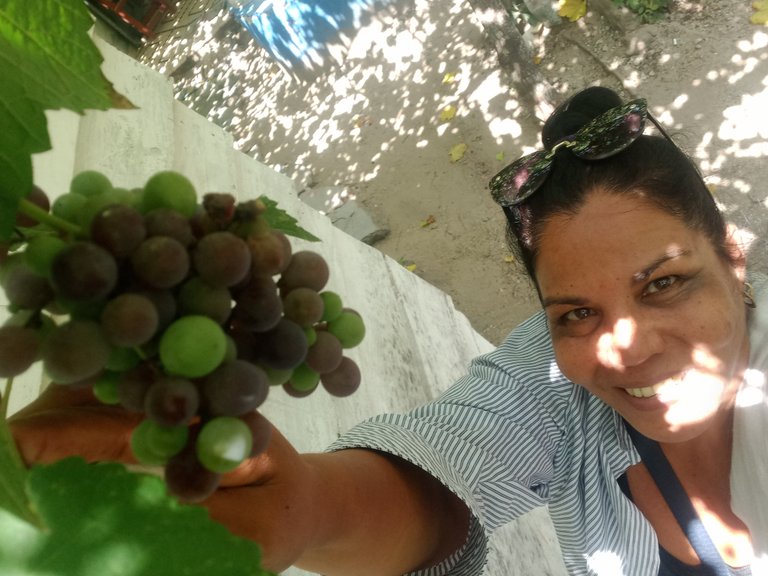
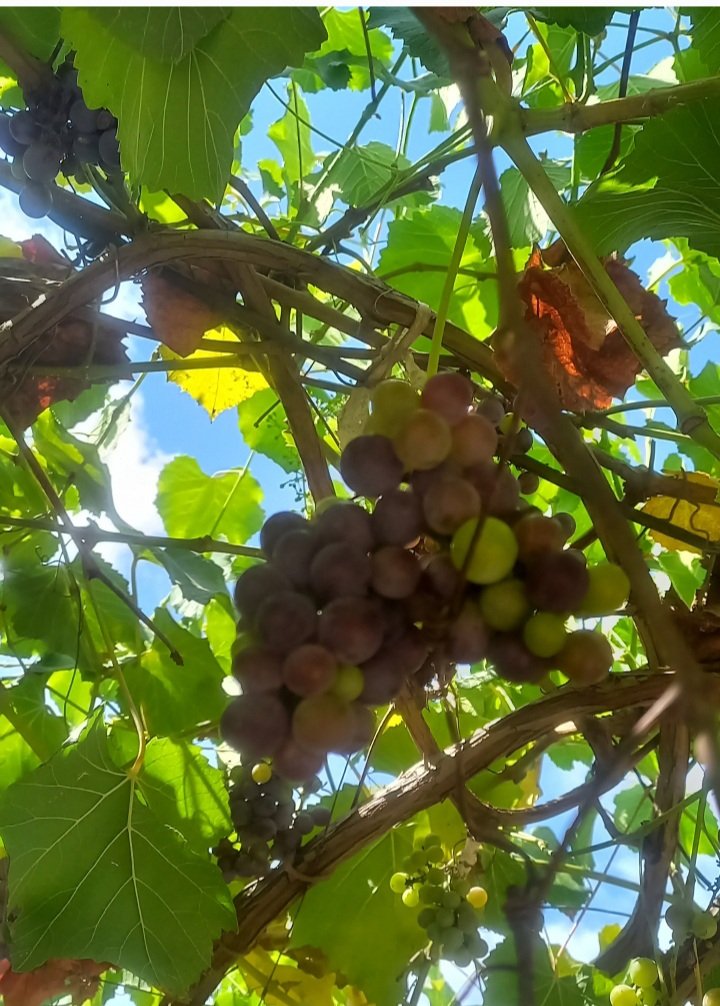
La uva siempre me lleva a Europa, a esas ciudades donde se producen vinos de diferentes tipos. Pero esta vez les presentaré las uvas negras cultivadas en los patios cubanos. Generalmente son ácidas propias para confeccionar vino casero o vinagre.
En el mundo de las frutas, pocas son tan versátiles y ricas en beneficios como las uvas negras. Estos pequeños frutos, de piel oscura y pulpa jugosa, no solo deleitan el paladar, sino que también esconden un tesoro de propiedades para la salud. Su tonalidad profunda, que va del morado al negro azulado, es la primera pista de su valor nutricional: es el resultado de las antocianinas, poderosos antioxidantes que combaten el envejecimiento celular.
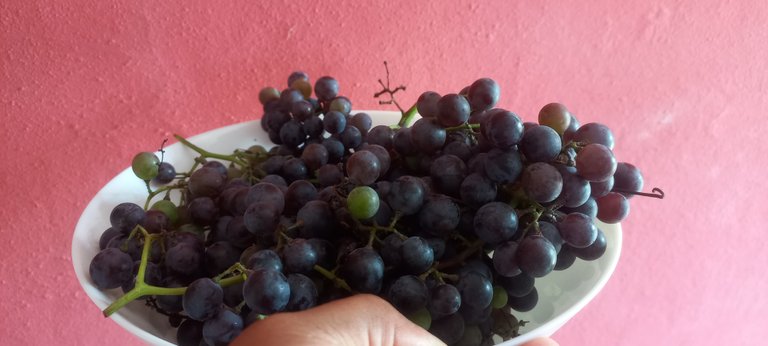
Desde la antigüedad, las uvas negras han sido símbolo de abundancia y salud. Los griegos y romanos las consumían frescas o en forma de vino, atribuyéndoles propiedades revitalizantes. Hoy, la ciencia confirma lo que la intuición ancestral ya sabía, estas uvas son aliadas del corazón. Su alto contenido en resveratrol, un compuesto antiinflamatorio, ayuda a reducir el colesterol y mejorar la circulación, protegiendo el sistema cardiovascular.
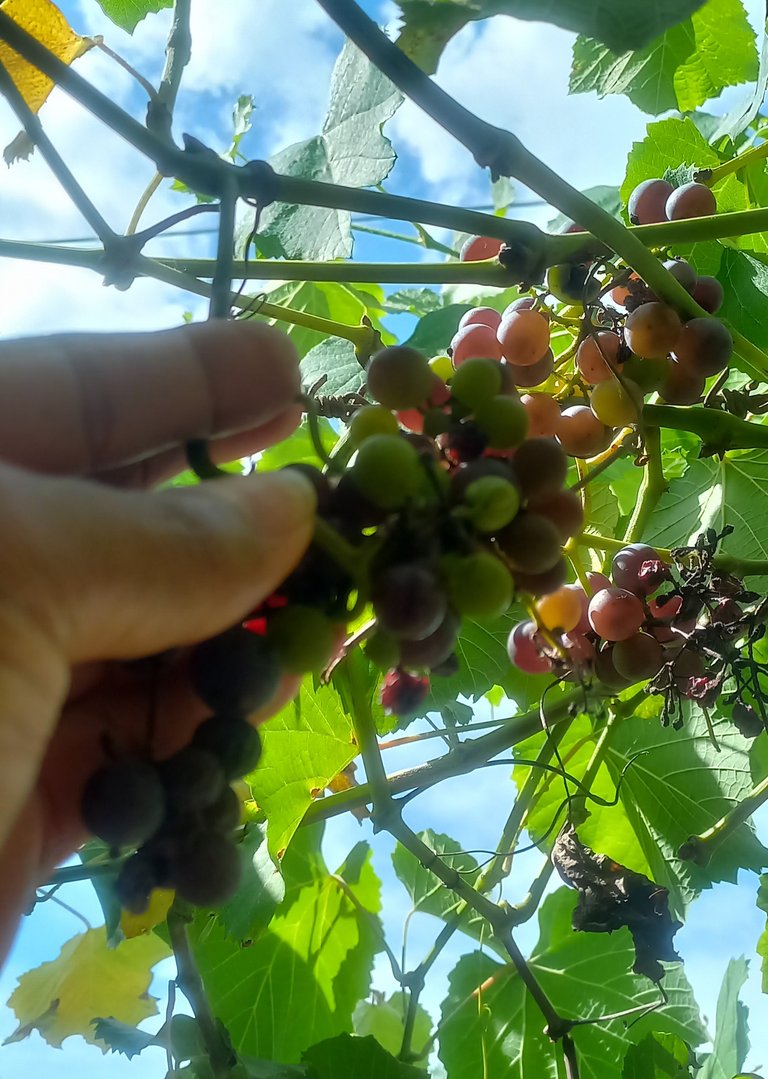
Me gusta comerlas porque su fibra natural favorece la digestión y regula el tránsito intestinal. Me gustan los sabores ácidos.
Pero sus virtudes no terminan ahí. Las uvas negras son también una fuente rápida de energía gracias a sus azúcares naturales, ideales para deportistas o quienes necesitan un impulso vital. Su jugo, dulce y aromático, hidrata y aporta vitaminas, esenciales para la piel y la coagulación sanguínea.
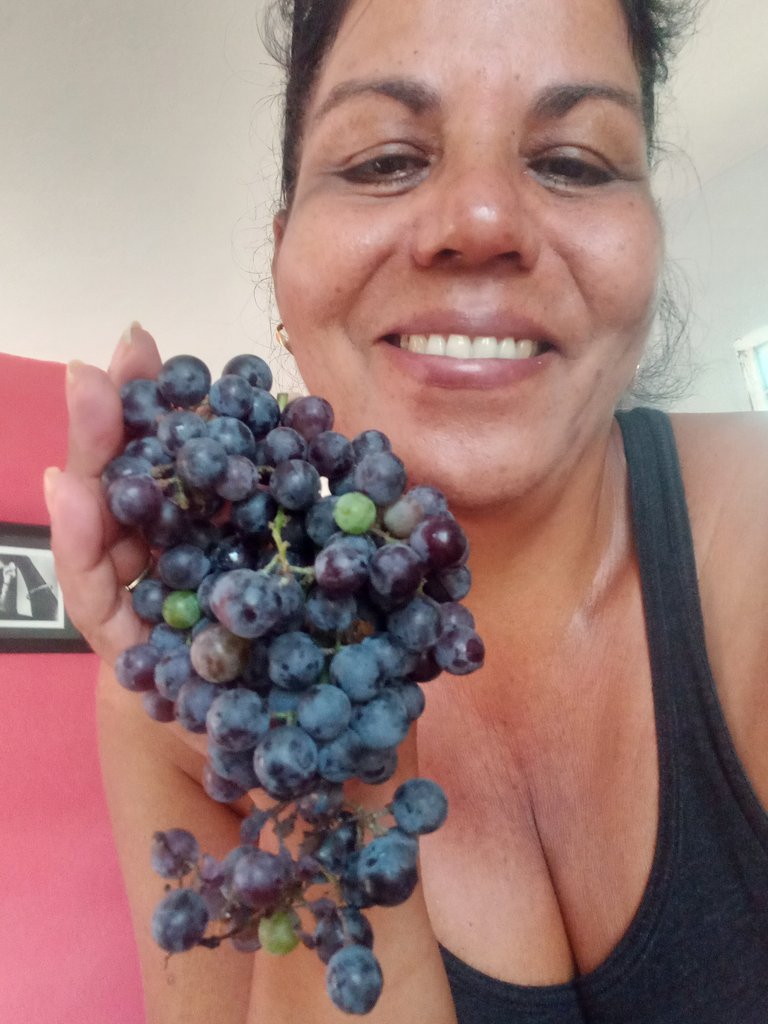
Más que un simple manjar, las uvas negras son un regalo de la naturaleza. Su sabor, su textura y sus beneficios las convierten en un alimento que trasciende lo gastronómico para convertirse en medicina natural. En cada uva se resume la sabiduría de la tierra.
Con estas haré un jugo.
Ingrediente
1 libra de uva
Procedimiento
No es tan fácil prepararlas. Como ven saqué cada una de la rama, debemos quitarle todas los restos de paja y limpiarlas bien.

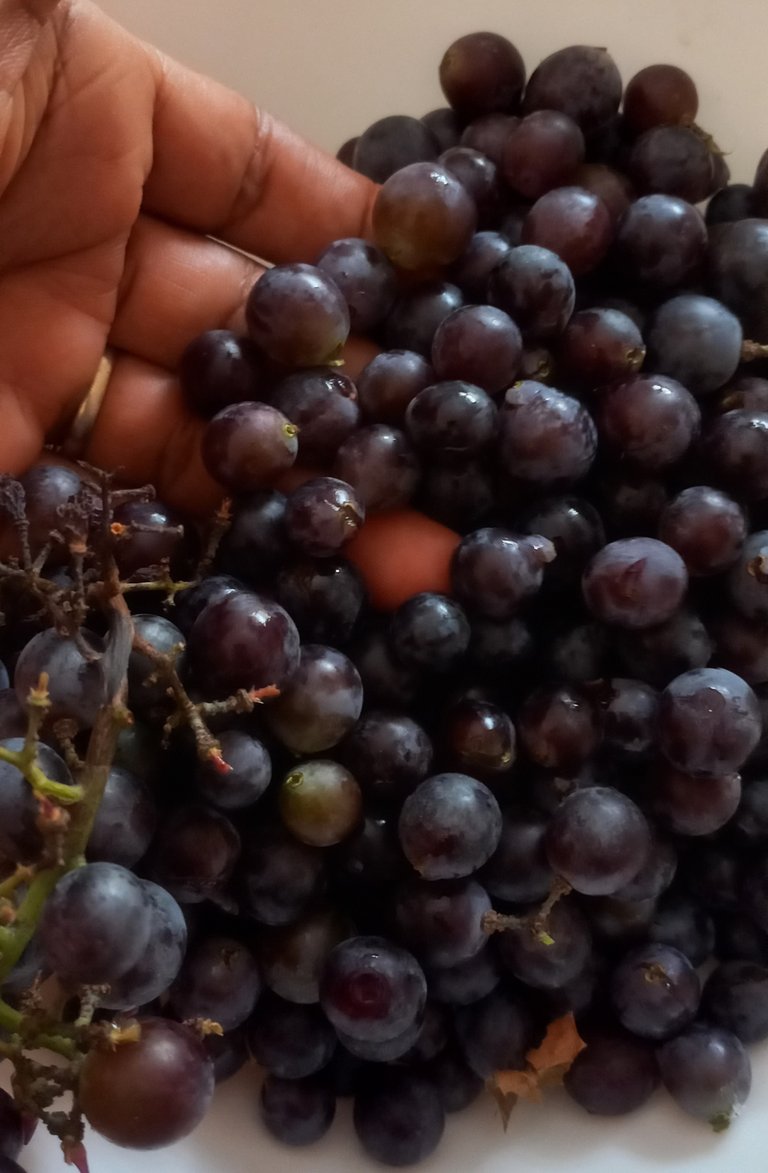
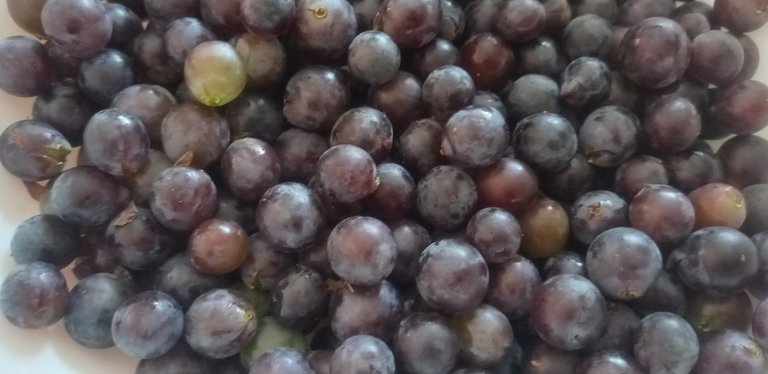
Luego de lavarlas las puse en una licuadora, y le di pequeños golpes para no triturar las semillas.
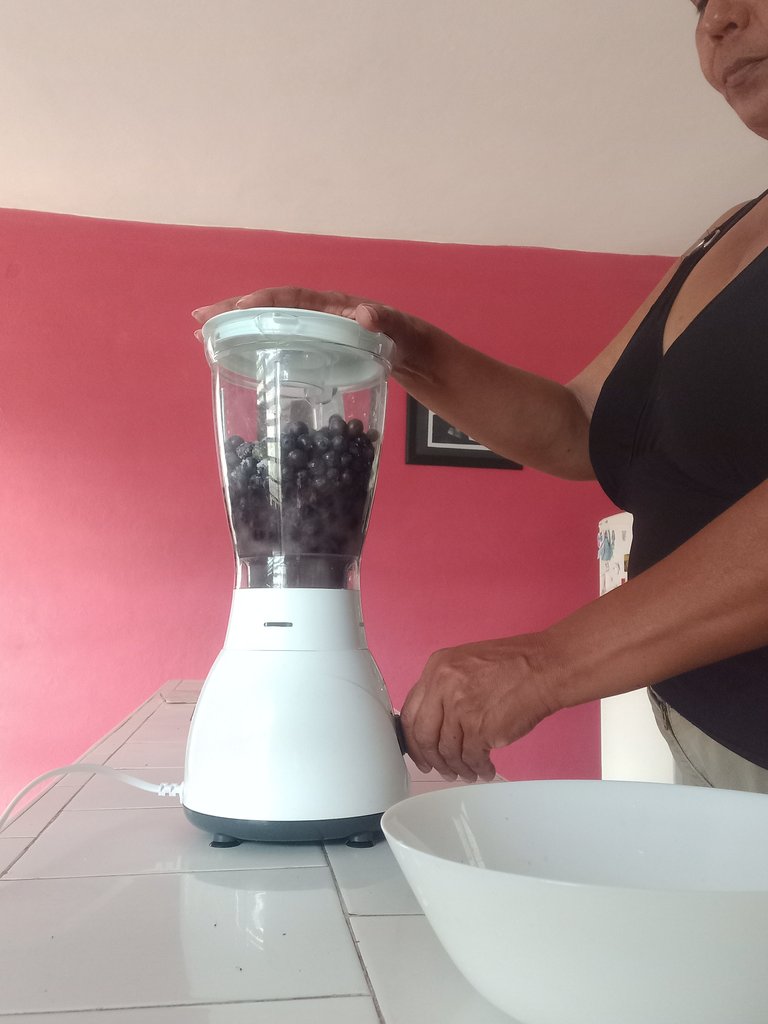 | 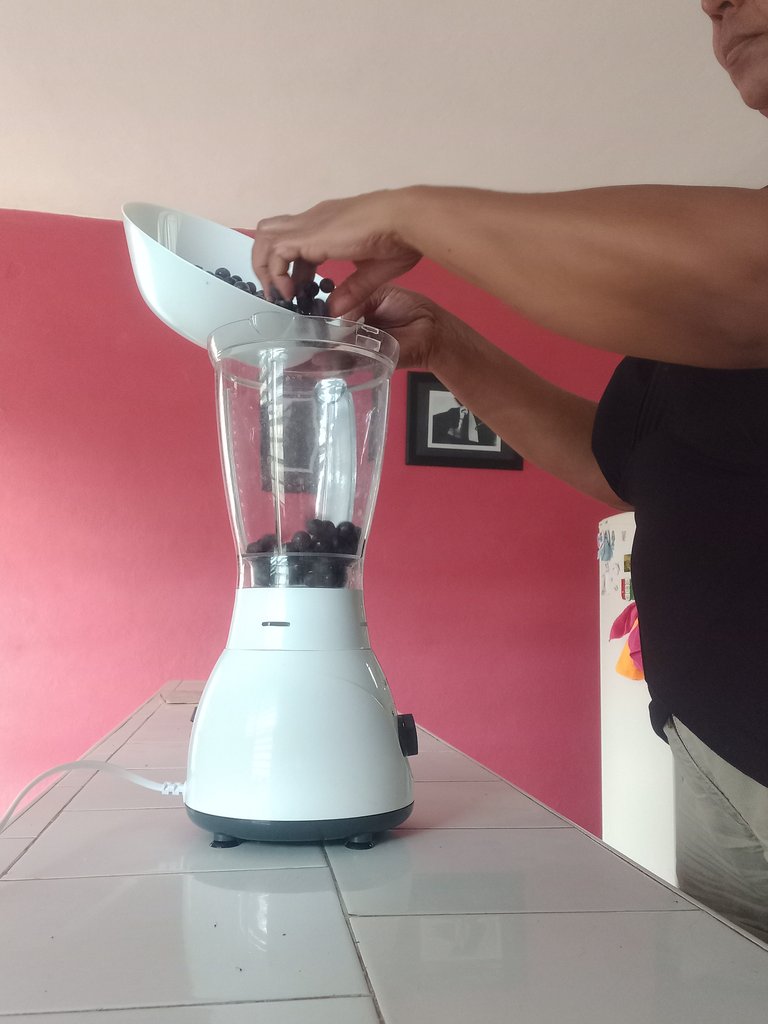 | 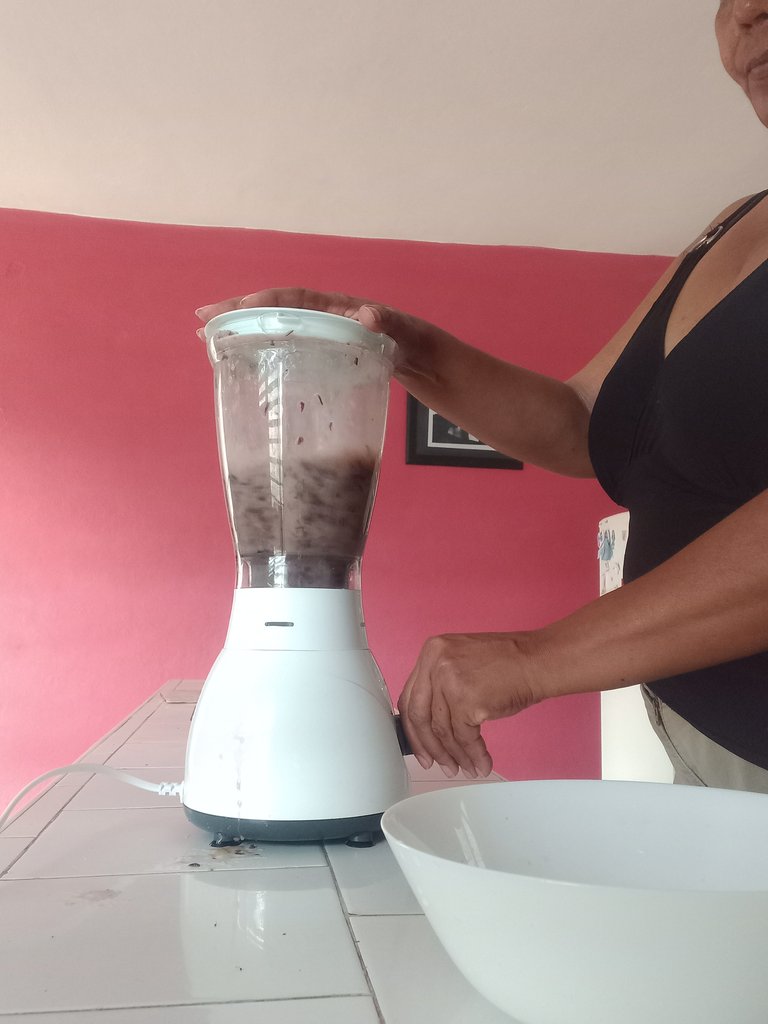 |
|---|
Ahora extraemos el sumo presionando la pulpa. Puede verse la belleza del color, morado intenso que quise demostrar con mi blusa, convirtiéndose en un espectáculo visual. Su tonalidad me sugiere atardeceres de otoño. Al servirlo, la luz lo atraviesa creando un juego de claroscuros que hipnotiza. Esta es la parte que más disfruto, y beberlo.
Este líquido, espeso y vibrante, esconde mucha riqueza nutricional. En cada copa, el jugo de uva negra es un tributo a la elegancia de la naturaleza.
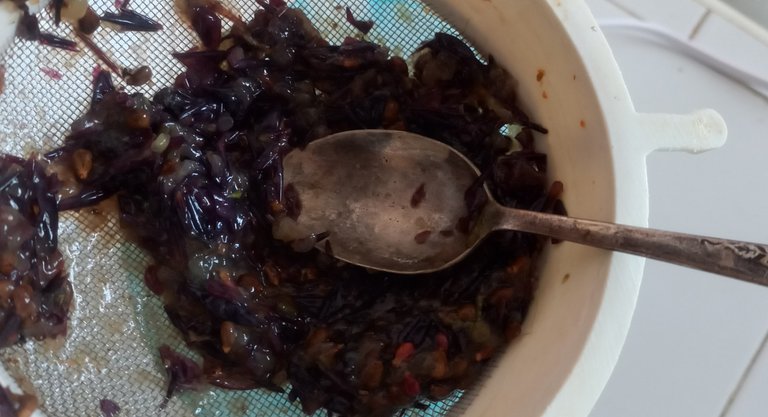
El sumo contiene suficiente azucar por lo que no creí necesario agregarle endulzantes. Lo refrigeré y al servirlo le agregué tres cubos de hielo.
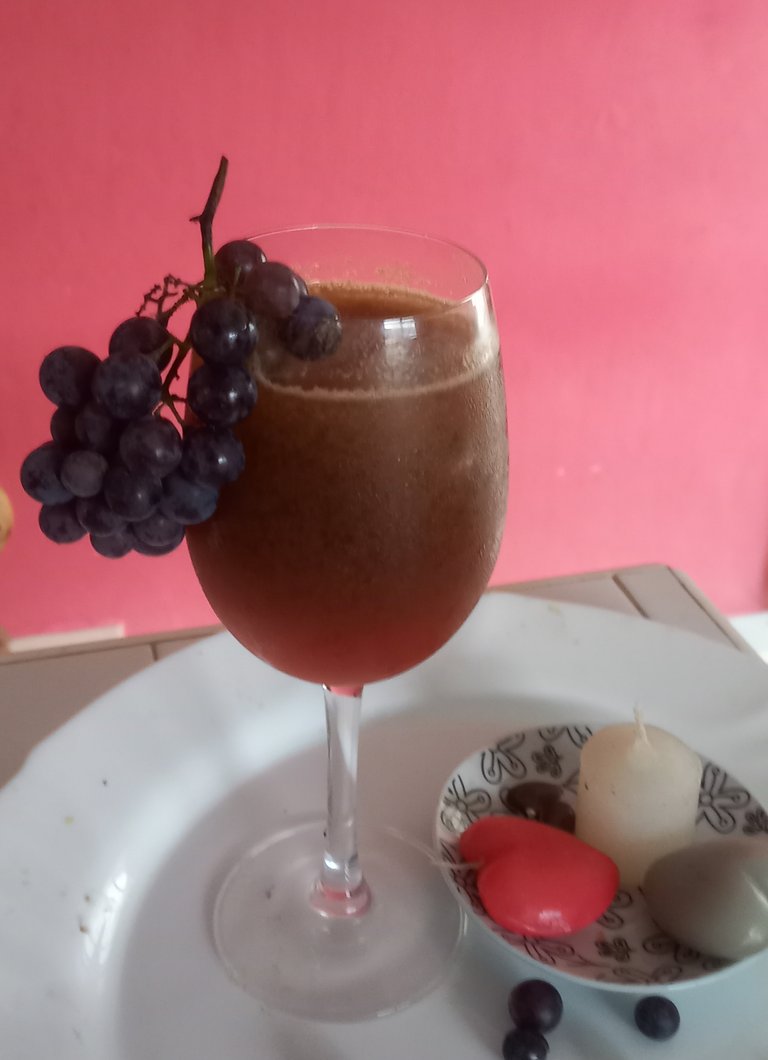


Gracias por visitar mi blog. Soy crítica de arte, investigadora social y amante de la cocina. Te invito a conocer más de mí, de mi país y de mis letras. Texto y fotos de mi propiedad.



A Sip of Autumn
Greetings to my friends at @AmazingDrinks!

I’ve been wanting to return to this community, and this time, I bring you an exquisite drink made from a fruit that, though well-known, isn’t always within reach—the grape. Today, I visited the countryside, and at my friend Magda’s house, there’s an immense vine covering the roof, with hundreds of grape clusters hanging like chandeliers.



Grapes always transport me to Europe, to those cities where different types of wines are produced. But this time, I present to you the black grapes grown in Cuban backyards. They’re typically tart, perfect for homemade wine or vinegar.
In the world of fruits, few are as versatile and rich in benefits as black grapes. These small, dark-skinned fruits with juicy flesh not only delight the palate but also hide a treasure trove of health properties. Their deep hue, ranging from purple to bluish-black, is the first clue to their nutritional value—anthocyanins, powerful antioxidants that fight cellular aging.

Since ancient times, black grapes have been a symbol of abundance and health. The Greeks and Romans consumed them fresh or as wine, attributing revitalizing properties to them. Today, science confirms what ancestral intuition already knew—these grapes are heart-friendly. Their high resveratrol content, an anti-inflammatory compound, helps reduce cholesterol and improve circulation, protecting the cardiovascular system.

I love eating them because their natural fiber aids digestion and regulates intestinal transit. I enjoy their tangy flavor.
But their virtues don’t end there. Black grapes are also a quick source of energy, thanks to their natural sugars, ideal for athletes or anyone needing a vitality boost. Their sweet, aromatic juice hydrates and provides essential vitamins for skin and blood clotting.

More than just a delicacy, black grapes are nature’s gift. Their flavor, texture, and benefits elevate them beyond mere food into natural medicine. Each grape encapsulates the wisdom of the earth.
With these, I’ll make juice.
Ingredient:
- 1 pound of grapes
Procedure:
Preparing them isn’t so easy. As you can see, I plucked each grape from the stem, removed all traces of debris, and cleaned them thoroughly.



After washing them, I blended them gently to avoid crushing the seeds.
 |  |  |
|---|
Next, I extracted the juice by pressing the pulp. You can see the stunning deep purple color—I even matched it with my blouse! It’s a visual spectacle, evoking autumn sunsets. When poured, the light plays through it, creating mesmerizing contrasts. This is my favorite part—both making it and drinking it.
This thick, vibrant liquid holds immense nutritional richness. In every glass, black grape juice is a tribute to nature’s elegance.

The juice is naturally sweet enough, so I didn’t add any sweeteners. I chilled it and served it with three ice cubes.



Thanks for visiting my blog. I’m an art critic, social researcher, and culinary enthusiast. I invite you to learn more about me, my country, and my writing. Text and photos are my own.



